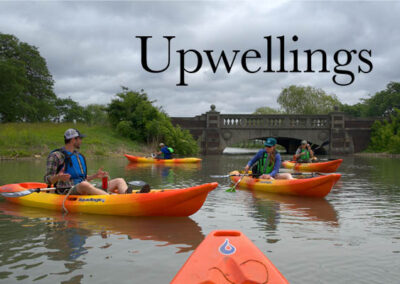 In 2019, a team from the Michigan, Ohio, and Wisconsin Sea Grant programs are embarking on a three-year venture to help marinas make their facilities more environmentally sustainable by harnessing the power of green infrastructure.
In 2019, a team from the Michigan, Ohio, and Wisconsin Sea Grant programs are embarking on a three-year venture to help marinas make their facilities more environmentally sustainable by harnessing the power of green infrastructure.
Michigan Sea Grant leads the three-state Sea Grant team that was awarded $809,000 in 2018 by the Great Lakes Protection Fund, an endowment established by seven states in 1989 to support projects that restore or enhance Great Lakes ecosystem health.
The project, titled “Advancing Stormwater Management at Marinas in the Great Lakes,” will support creation of a tool to help marinas make wise decisions about managing water as it flows across their facilities.
Stormwater runoff — including rainwater and snowmelt — can carry sediments, chemicals, pathogens, and litter straight into the nearest water body. Marinas that can’t manage stormwater efficiently are at higher risk of flooding, erosion, water contamination, and sewage problems. As coastal storms become more frequent and severe, and as water levels continue to fluctuate, it’s more vital than ever for marinas to make smart choices about how to handle stormwater.
Increasingly, marinas are turning to green infrastructure systems to slow, capture, and filter rainwater and snowmelt before it enters nearby water bodies like the coastal waters of the Great Lakes. Green infrastructure installations like rain gardens, porous pavement, and green roofs can boost property values, add aesthetic appeal, reduce operational costs, enhance water quality, and decrease flooding.
However, there are barriers to implementation of green infrastructure at Great Lakes marinas. Green infrastructure projects are sometimes perceived as difficult and expensive to install and maintain. And not every installation will be appropriate or effective at every facility. This project will develop the resources and on-the-ground examples necessary to help address these challenges.
With support from the grant, staff from the three states will spend six months developing a decision-support tool to help owners and operators choose the best infrastructure projects for their marinas. Clean Marina programs from each state are fully integrated into the project, allowing the project team to leverage certified marina partnerships to engage these sites in the project and future action on green infrastructure in the Great Lakes.
The team will test the tool by using it to choose a green infrastructure practice for one or two private Clean Marinas in the states of Michigan, Ohio, and Wisconsin. During the final two and a half years of the grant, the team will help the marinas design and install the selected green infrastructure practice, including signs and resources to educate marina managers and staff as well as curious patrons. Researchers from The Ohio State University will monitor the sites before and after the installations to record changes in water quality.
The green infrastructure project has the potential to meet many needs in the Great Lakes region. The decision-support tool will make it easier for marinas to choose feasible and effective stormwater management strategies that fit their facility. Educational resources will teach boaters about the power and potential of green infrastructure.
“We are very grateful that the Great Lakes Protection Fund recognized the importance of improving stormwater management at Great Lakes coastal marinas,” says Catherine Riseng, Michigan Sea Grant’s interim director and research program manager. “We feel that this project furthers the Fund’s mission to change the world through improved use of water and the Sea Grant dedication to the protection and sustainable use of the Great Lakes and coastal resources.”
Contacts
- Catherine Riseng, Michigan Sea Grant interim director and research program manager, (734) 763-9422, [email protected]
- Rhett Register, Michigan Sea Grant communications program leader, (734) 647-0767, [email protected]


